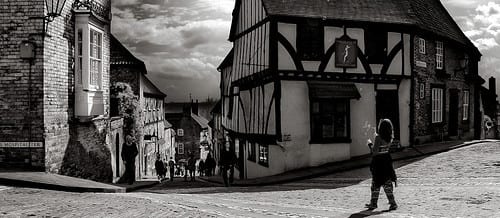Standing in our first site today, a man approached us and asked “Why are they (the headless angels around the archway) headless?” We told what is thought to have happened in the Reformation, which he then used to create a story of a man who during the Reformation secretly cut the heads off but was caught before he could finish. Although we weren’t able to record this great encounter, we plan to use some verbatim from the moment. After speaking with Rachel, we want to add more perspectives to the site, allowing the audience to think more creatively and see differently perspectives to the architecture. Like Fiona Wilkie, we also feel that “it’s not just about a place, but the people who normally inhabit and use that place. For it wouldn’t exist without them” (Wilkie, 2002, 145), and thus we need to keep them prominent into our site-specific tour. Rachel also informed us that the grass area we begin our piece on is in fact a graveyard, which adds a strange layer to the playful picnic we have at the beginning. Using this new information, we plan to change how the audience sees the space by telling them at the end of what they previously stood on, hopefully tieing in to the theme of life and journey. We also discovered that we need to link our tour more to the themes within the speech of “All the worlds a stage…”. We think the first site connects to the idea of creation, the second site to childhood, and the ending graveyard to death. To add more links, we plan to sprinkle some confetti on the corner nearby the front of the Cathedral, subtly showing the idea of adulthood with marriage as prominent moment in an adults life, often with a wedding performed in a religious place. After we found this link, we saw a family walking past dressed in wedding appropriate clothing, a coincidence we were all excited about. Lastly, by having an elderly person read out the speech, and the ending lines read by a younger child, we hope to reflect upon the circular journey of the walk around the Cathedral and life in all, leaving our audience with several ideas and perspectives to think of.
Wilkie, F. (2002) Mapping the Terrain: a Survey or Site-Specific Performance in Britain. Cambridge: Cambridge University Press.
